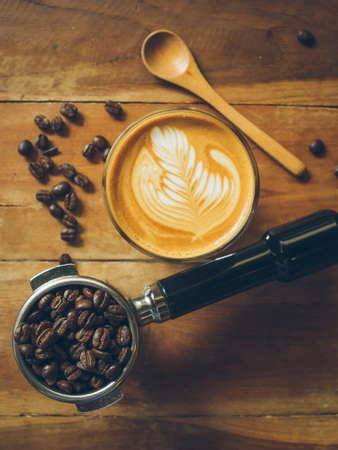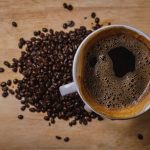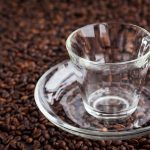1. Origins of Decaffeinated Coffee
Decaffeinated coffee, or “decaf” as its commonly known in the U.S., has a fascinating origin story that starts in Europe before making its way across the Atlantic. The concept of removing caffeine from coffee dates back to the early 1900s, when German coffee merchant Ludwig Roselius developed the first commercial decaffeination process. Roselius believed that excessive caffeine had harmed his fathers health, inspiring him to find a way to enjoy coffee without the jitters.
The First Decaf: From Germany to the World
Roselius patented his method in 1906 and introduced the world to “Sanka,” short for “sans caféine” (without caffeine in French). Sanka quickly gained popularity in Europe and was later brought to the United States in the 1920s. It became especially popular during Prohibition when Americans were searching for alternative beverages with less stimulating effects than alcohol or regular coffee.
How Decaf Entered American Culture
In the U.S., decaf was initially marketed as a healthier and more sophisticated option. It appealed to those who wanted to enjoy the taste and ritual of coffee drinking without staying up all night. By the mid-20th century, decaf had become a staple in diners, office break rooms, and even home kitchens across America.
Early Decaf Brands and Their Impact
| Brand | Origin | Year Introduced | Notable Contributions |
|---|---|---|---|
| Sanka | Germany/France | 1906 (Europe), 1920s (USA) | First major decaf brand; mass-marketed in America |
| Kaffee HAG | Germany | Early 1900s | Pioneered early decaffeination technology |
| Nescafé Decaf | Switzerland | 1930s | Brought instant decaf into American homes |
As American tastes evolved, so did their relationship with decaf. What started as a niche product became a mainstream choice, paving the way for todays wide variety of decaffeinated options found in supermarkets, specialty cafés, and artisan roasters nationwide.
2. Decaf in Mid-Century America
During the 1950s and 60s, decaffeinated coffee began to gain real traction in American households. This rise was largely driven by growing health concerns, particularly related to heart health and nervousness, which were commonly associated with caffeine consumption at the time. As medical advice started pointing toward moderation, many Americans turned to decaf as a safer alternative.
Advertising played a major role in this shift. Coffee brands launched targeted campaigns aimed at homemakers—who were often the decision-makers when it came to grocery shopping—and older adults who were more likely to be concerned about health issues. These ads emphasized that decaf offered all the flavor of regular coffee without the “jitters” or sleep disturbances.
Popular Advertising Messages in the 1950s–60s
| Target Audience | Advertising Message |
|---|---|
| Homemakers | “Serve your family the smooth taste without the caffeine.” |
| Older Adults | “Enjoy coffee again—without worrying about your heart.” |
| General Consumers | “All the flavor you love, none of the caffeine you don’t.” |
Decaf also fit neatly into the post-war lifestyle that emphasized convenience and modern living. Instant decaf coffees like Sanka became kitchen staples, promoted through radio jingles and television spots that reinforced their benefits for family well-being. The message was clear: drinking decaf meant caring for your health without giving up on daily rituals.
This era marked a turning point where decaffeinated coffee moved from being a niche product to an accepted part of everyday life, especially among those seeking balance between enjoyment and wellness.
![]()
3. Changing Perceptions in the 1980s and 90s
During the 1980s and 90s, decaffeinated coffee in the United States underwent a major image shift. As Americans became more health-conscious, particularly with growing awareness around heart health, cholesterol, and stress management, decaf started gaining popularity among people looking to cut back on caffeine without giving up their daily cup of joe.
At the same time, however, decaf developed a bit of an identity crisis. While it was seen as the “healthier” option, it also got labeled by some coffee drinkers as weak or lacking in flavor. Many began to associate regular coffee with energy, productivity, and authenticity—while decaf was considered a compromise or even a lesser experience.
The Health-Conscious Appeal
As low-fat diets and jogging became trends of the time, so did the idea of reducing caffeine intake. Doctors and health magazines often suggested cutting down on stimulants for better sleep, lower anxiety levels, and improved heart health. This gave decaf a new role: not just an alternative for those sensitive to caffeine, but a smarter choice for anyone trying to live healthier.
Reasons People Chose Decaf in the 80s & 90s
| Reason | Description |
|---|---|
| Health Concerns | To manage blood pressure, anxiety, or heart conditions |
| Sleep Improvement | Avoiding caffeine to sleep better at night |
| Lifestyle Trends | Following diet trends that promoted “cleaner” living |
| Caffeine Sensitivity | Experiencing jitters or discomfort from regular coffee |
The Flavor Stigma
Despite its growing popularity among certain groups, decaf coffee struggled with a bad reputation when it came to taste. Much of this stemmed from early decaffeination methods that stripped away not only caffeine but also much of the flavor profile. Coffee lovers described it as flat or bland compared to its caffeinated counterpart.
This stigma made decaf something people sometimes ordered with a sense of embarrassment—or avoided altogether. In pop culture and everyday conversation, drinking decaf was occasionally mocked as not being “real” coffee. It became associated with being overly cautious or lacking passion for the true coffee experience.
Common Stereotypes About Decaf Coffee in That Era:
- “Its just brown water.”
- “Only old people drink decaf.”
- “You cant be a real coffee lover if you drink decaf.”
- “Decaf is for people who can’t handle real coffee.”
These perceptions would linger into the early 2000s—but they were already starting to be challenged by advancements in roasting techniques and growing interest in specialty coffee. As more consumers demanded better-tasting options across all categories—including decaf—change was slowly brewing.
4. The Specialty Coffee Movement and Decaf
The early 2000s brought a major shift in American coffee culture with the rise of the third-wave coffee movement. This wave emphasized quality, transparency, sustainability, and a deeper appreciation for the craft behind every cup of coffee. While decaf had long been dismissed as inferior or “not real coffee,” this movement began to challenge that perception.
Raising the Bar for Decaf
As specialty coffee roasters began focusing on bean origin, processing methods, and flavor profiles, decaffeinated coffee also started getting attention. Instead of using older chemical-based decaffeination techniques like methylene chloride or ethyl acetate, many roasters switched to more natural and flavor-preserving methods such as the Swiss Water Process and CO2 Process.
Comparison of Decaf Processing Methods
| Method | Description | Impact on Flavor |
|---|---|---|
| Chemical Solvent (e.g., Methylene Chloride) | Uses solvents to remove caffeine from beans | Often results in flat or dull flavors |
| Swiss Water Process | Uses water, temperature, and time to extract caffeine without chemicals | Keeps more original flavor; cleaner taste |
| CO2 Process | Uses pressurized carbon dioxide to selectively remove caffeine | Preserves complex flavor compounds better than chemical methods |
A New Generation of Decaf Drinkers
The third-wave movement didnt just improve processing—it also redefined how people saw decaf. Cafés began offering single-origin decaf beans with detailed tasting notes, roasted with care just like their caffeinated counterparts. Baristas were trained to brew decaf with precision, ensuring it tasted just as good as any other pour-over or espresso shot on the menu.
This shift helped reduce the stigma around decaf coffee. Health-conscious consumers, those sensitive to caffeine, and even hardcore coffee lovers started giving decaf another chance—not because they had to, but because it actually tasted good.
The Role of Transparency and Education
A big part of this change was education. Roasters and baristas started sharing more about where decaf beans came from, how they were processed, and why they chose certain methods. This transparency built trust with customers who previously assumed all decaf was low-quality.
The result? A growing acceptance—and even celebration—of decaf within America’s evolving coffee scene. What was once an afterthought became a respected part of the specialty coffee world.
5. Modern Attitudes and Market Trends
In recent years, decaffeinated coffee has made a major comeback in the American coffee scene. Once seen as a second-choice option for those who couldnt handle caffeine, decaf is now gaining respect among coffee lovers, health-conscious consumers, and café owners alike. This shift is being driven by a mix of wellness trends, better sleep awareness, and a growing focus on creating inclusive environments where everyone can enjoy a cup of coffee—caffeine or not.
Health and Wellness Movement
The rise of wellness culture in the U.S. has played a big role in changing how people view decaf coffee. Many Americans are becoming more mindful of their caffeine intake due to concerns about anxiety, heart health, and sleep quality. As a result, theres growing interest in beverages that offer the taste and comfort of coffee without the stimulant effects.
Reasons People Choose Decaf Today
| Reason | Description |
|---|---|
| Better Sleep | Reducing caffeine helps improve sleep quality and prevents insomnia. |
| Lower Anxiety | Caffeine can increase anxiety symptoms in some individuals. |
| Pregnancy & Health Conditions | Doctors often recommend limiting caffeine during pregnancy or for certain medical issues. |
| Lifestyle Choice | Some prefer decaf simply for its flavor or as part of a caffeine-free lifestyle. |
The Rise of Specialty Decaf
Coffee roasters across the country are now investing in high-quality decaf beans and advanced processing methods like Swiss Water Process or CO2 extraction. These techniques preserve the natural flavors of the coffee without using harsh chemicals, making it easier for consumers to enjoy a delicious cup without the jitters.
Popular Decaf Processing Methods
| Method | Key Feature |
|---|---|
| Swiss Water Process | Chemical-free method that uses water to remove caffeine while keeping flavor intact. |
| CO2 Method | A high-tech approach that uses carbon dioxide to extract caffeine gently. |
| Methylene Chloride Process | A traditional method still used but now more regulated and safe. |
A More Inclusive Café Culture
Coffee shops are responding to this demand by offering better decaf options on their menus. From artisan pour-overs to decaf espresso shots that taste just as bold as regular ones, cafés aim to serve all types of customers—whether they’re avoiding caffeine permanently or just taking a break later in the day.
How Cafés Are Adapting:
- Adding craft decaf options alongside signature blends
- Training baristas on how to brew great-tasting decaf drinks
- Highlighting decaf choices on menus and chalkboards
- Catering to late-night guests with full drink menus minus the buzz
This modern embrace of decaffeinated coffee shows how American coffee culture is evolving—not just around taste preferences but also around values like health, inclusion, and quality for everyone at every hour of the day.


